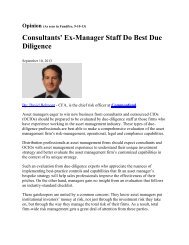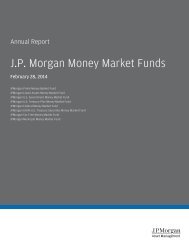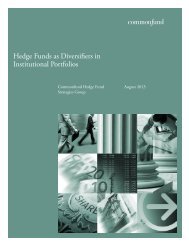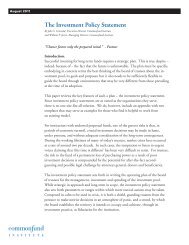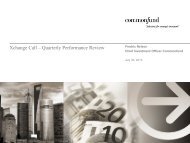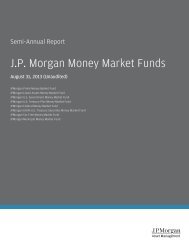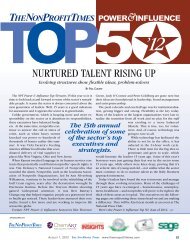Principles of Nonprofit Investment Management - Commonfund
Principles of Nonprofit Investment Management - Commonfund
Principles of Nonprofit Investment Management - Commonfund
Create successful ePaper yourself
Turn your PDF publications into a flip-book with our unique Google optimized e-Paper software.
Asset AllocationThe inevitable ebb and flow <strong>of</strong>markets pose a special challenge tononpr<strong>of</strong>its, whether they are striving topreserve their capital base over the longterm or concentrating their distributionswithin a limited time period.Anyone faintly aware <strong>of</strong> the behavior<strong>of</strong> the stock and bond markets fromthe early 1990s into the early 2000shas seen how extreme and rapid theups and downs can be, and how unpredictable.Even within short time frames– single trading days, for instance –market volatility has become moreextreme than in almost any time in thepast century.Nonpr<strong>of</strong>its obliged to make relativelyfrequent withdrawals from their portfoliosmay naturally wish for somesemblance <strong>of</strong> consistency in theirinvestment results. This suggests alow-risk, low-volatility strategy.Nonpr<strong>of</strong>its with urgent distributioncommitments and shorter timehorizons, such as international relieforganizations, might well concentratea portion <strong>of</strong> their portfolios in fixedincomeinvestments <strong>of</strong> short durationand high liquidity, a strategy thatminimizes volatility.On the other hand, nonpr<strong>of</strong>its with along time horizon may find that riskavoidance has a very significant cost.Over the long term, high returns generallycome as the reward for takinggreater risks. And, with rising payoutpressures, nonpr<strong>of</strong>its certainly needhigher returns.Either way, nonpr<strong>of</strong>its face difficultdecisions in investment management.Obviously this challenge calls notonly for financial expertise but als<strong>of</strong>or great prudence in managing theinvestment process.Historically, prudence was a legalrequirement <strong>of</strong> fiduciary responsibilityand fostered a highly conservativeinvestment bias. In some early commonlaw rulings, common stock weredeemed “per se” imprudent. The experience<strong>of</strong> the 1930s, however, provedthat bonds could be risky, too. Thecentury-old legal principle, popularlyknown as “the prudent man rule,”then became the pervasive guide fortrustees, giving them greater discretionin selecting investments, but stillrequiring them to invest for currentincome rather than total return.- 15 -



